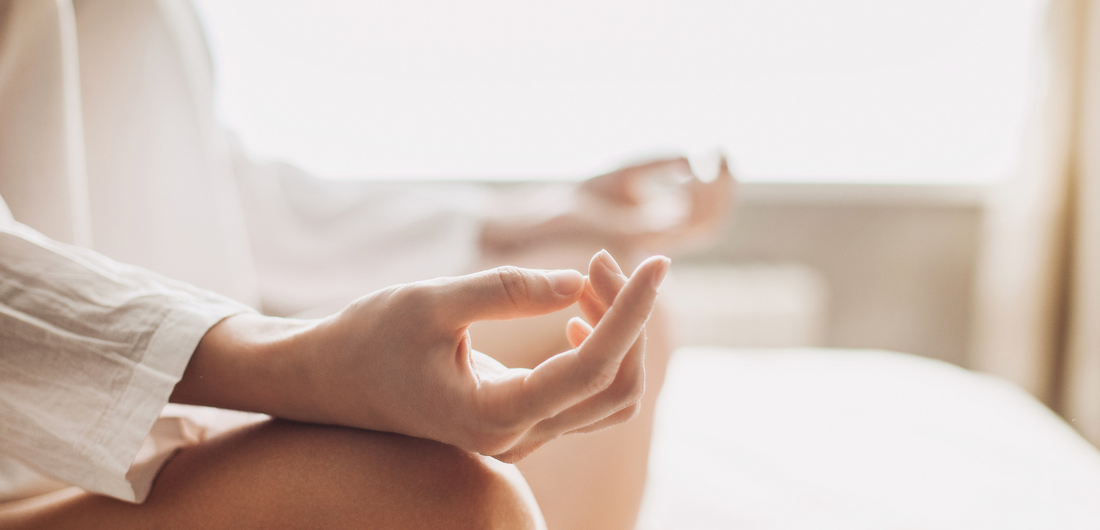Navigating through rough and emotionally draining times can take a huge toll on our well being. These periods can be very confusing, frustrating, upsetting and all the other emotions packaged into one, only to be heightened by external events and stimuli.
First, know that it is okay and completely normal to feel this way. However, once we recognise our mental state, it is important to take proactive steps to help ourselves and those around us. Our heart goes out to everyone battling the pandemic, especially in India, where the second wave has been devastating. We wish for an abundance of health, strength and safety for everyone.
The everyday practice of gratitude has been a pillar of strength through all our rough patches. List down 3-5 things you are grateful for everyday. This helps shift our conscious thought from complaining to being thankful for our everyday privileges like a healthy body, access to food and water, a roof over our heads, electricity, access to healthcare services and so many more everyday luxuries we take for granted.
However, sometimes this practice might not be enough to calm us down at the moment. This is when it is useful to understand the deep connection between our physical and mental state. Yoga is a great addition to help us find our centre and release repressed emotions, thereby reducing anxiety. These yoga asanas and breathing techniques bring a sense of calm by aligning our mind and body. These asanas can be incorporated into our everyday life and can be an extremely fruitful habit to establish.
Here are 5 yoga asanas that can help you relax and is known to lower the feeling of anxiousness:
1. Nadhi Shodhan Pranayam:
Nadhi Shodhan Pranayam is a breathing technique that can be used to unblock subtle energy channels in the body. It helps in relaxing the mind and creates a sense of calm and happiness by taking away the stress and fatigue accumulated in the body.
How to: Find a comfortable spot, sit with your spine erect and shoulders relaxed. Place your left hand on your knee, with palms facing upwards. Place the tip of the index and middle fingers in between your eyebrows. Place your thumb and ring finger on the right and left nostril respectively. Now that you are in position, you are ready to start the practice. Gently press your thumb on the right nostril and exhale only from the left nostril. Now breathe in through the left nostril for 4 seconds. Press down your ring finger on the left nostril and hold for 4 seconds. Now lift your thumb and exhale for 6 seconds through your right nostril. Repeat the same cycle on the right nostril. This completes one round. Now repeat this for 9 rounds.
2. Balasana:
Balasana, popularly known as “Child’s Pose”, is an asana that helps slow down the mind and relax the nervous tension in our stomach. It is a comforting pose that helps relax our body and mind.
How to: Get on your knees on a yoga mat and rest your hips on the heels (your big toes should be touching each other). Make sure your knees are wider than your ribcage. Now raise your hands and bend forward, and bring your head down to the yoga mat. If you are unable to touch the yoga mat, use a blanket or pillow until your head rests on it, in order to relax your neck. Now take slow even breaths into the back of your ribcage and stay in this pose for 1-3 minutes.
3. Setu Bandhasana:
Setu Bandhasana also known as the “Bridge Pose”, has many benefits and is known to slow brain activity, thereby reducing stress and anxiety.
How to: Lie down on your back with your knees bent and feet in alignment with your hip and placed slightly away from your hip. Place your arms beside your body, with palms facing downward. Inhaling, lift your lower back, middle back and upper back up and hold this posture for a few seconds. Then exhale and slowly bring your upper, middle and lower back down. You can repeat this 2-3 times.
4. Adho Mukha Svanasana Asana:
This is also commonly known as “Downward Dog Position”. This asana helps increase blood circulation to the brain, open up the chest and relieve fatigue and stress.
How to: Take position by coming to your four - make sure your palms are parallel to your shoulders and feet the same width apart as your hip. Breathing in, lift your hip and straighten your elbow and knees to form a V shape. Push the floor and align your ears with your hands and look towards your naval. Work towards touching your heel to the ground. Hold the pose for sometime and then exhale and come back to your fours. This position can initially be hard to perfect but over time has a very calming effect.
5. Yoga Nidra:
Yoga Nidra is typically practiced towards the end of a yoga session and is a great way to meditate and bring attention to the now. This practice helps us observe and live in the present, which results in an absolute state of calm and much required stillness.
How To: Lie down on your back with your feet apart. Place your hands slightly away from your body with palms facing upwards. The following is a link of a guided Yoga Nidra by Gurudev Sri Sri Ravishankar. A 20 minute practice that will replenish you and help your mind be in the present (Guided Yoga Nidra by Gurudev Sri Sri Ravishankar).




